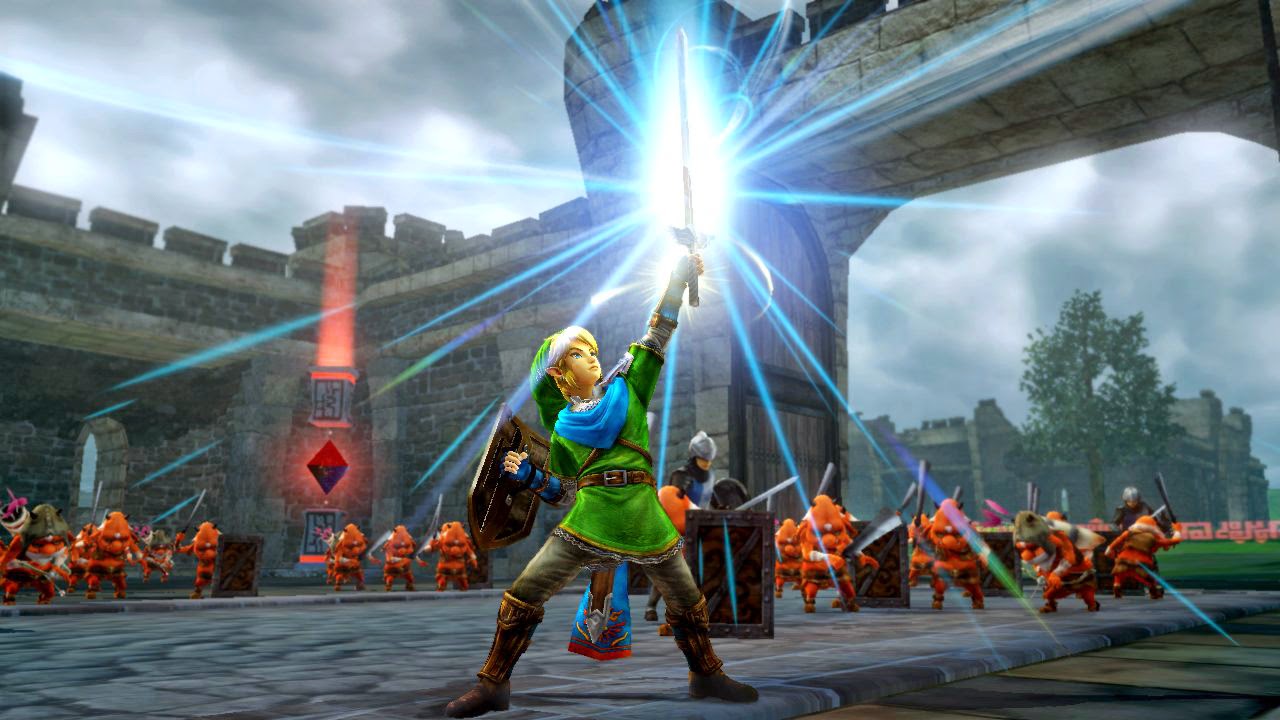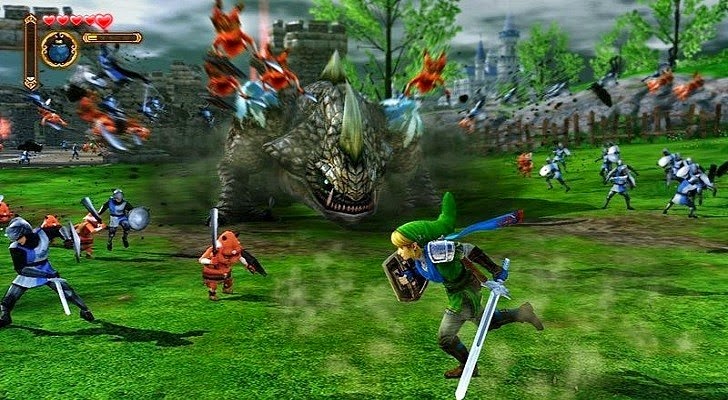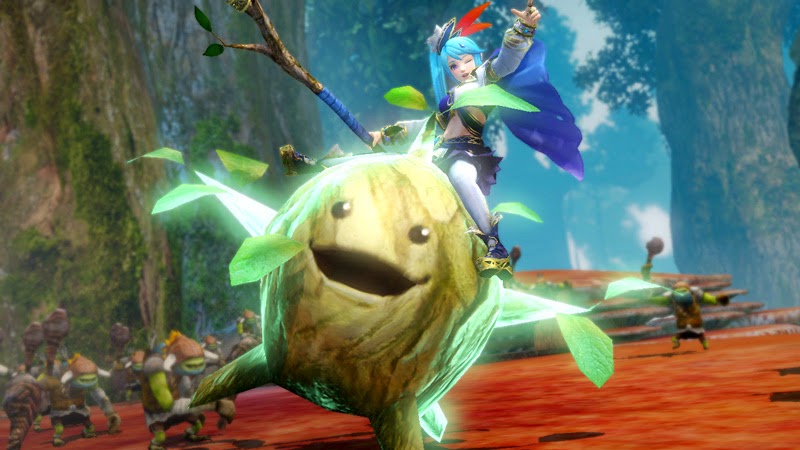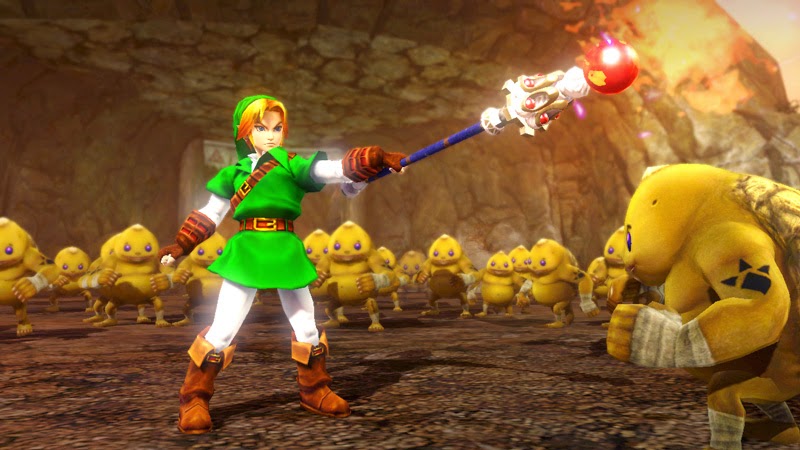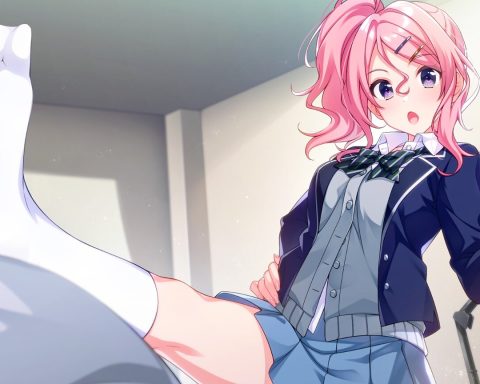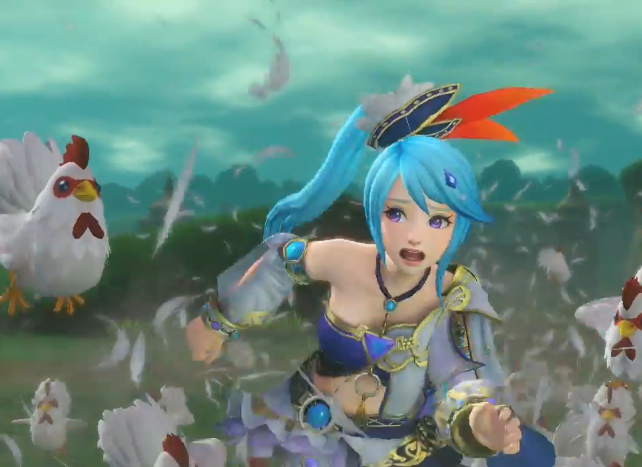 Review by Brad L.
Review by Brad L.
It is no secret that a lot of us love the Warriors series here at Digitally Downloaded. I’m sure many a reader here knows how Matt was first introduced to the series. You could easily say he is probably the biggest fan of the Warriors games on this site. What you definitely do not know, however, is that I’ve personally been playing the Warriors games since Dynasty Warriors 3 on the PlayStation 2. So you could possibly say that because I’ve been playing them for so much longer, I’m more of a Warriors gameplay aficionado than Matt is (shots fired!), although without a doubt he understands the history behind the games better than I.
In any case, Hyrule Warriors has been on my radar ever since that first day it was announced, as The Legend of Zelda is my favourite gaming series of all time (I have a piece of heart tattooed on my left forearm as proof of this), and I knew instantly the potential that Team Ninja and Omega Force could bring into the Legend of Zelda universe. Many were concerned about the mash-up, but after playing Hyrule Warriors for more than 100 hours already, with only 50 per cent of the content unlocked, I can happily state with certainty that these concerns are unfounded.
Hyrule Warriors stands alone as a title that transcends through different eras of The Legend of Zelda, from the beginnings of Skyward Sword, to the timeline-splitting Ocarina of Time, the Child Era title, Twilight Princess, and then in its own section of time. This is all non-canon, of course, with characters such as Ghirahim and Midna being able to interact, but by connecting to three such highly regarded titles, the credibility of Hyrule Warriors as incredible Zelda fan service gets a real boost. One could even go so far as to say Hyrule Warriors serves as the crib notes version of The Legend of Zelda universe, much like other Warriors titles do for their respective universes.
This is just as much of a Zelda game as it is a Warriors game, incorporating gameplay elements from both franchises. This in itself turns out to be a stroke of genius, with the idea that there can be giant armies of Bokolbins, Moblins, Poes and more led by the likes of Zant, Ganondorf, and newcomers Cia, Wizzro (not to be confused with classic Zelda enemy, Wizzrobe) and Volga were something I felt lacking in some recent Zelda games. After all, these bosses are meant to be warlords… so where are their armies? Now with the Warriors style of gameplay, seeing Zelda and Impa shouting commands to their troops to defend Hyrule Castle at all costs from an actual invasion is something that should send a shiver of nostalgia down the back of any fan.
Putting the shoe on the other foot, as a Warriors game, it benefits just as greatly with gameplay elements from the Zelda universe. Locking onto boss enemies with the left shoulder button is a welcome element that I’m not sure I’ll be able to do without in future Warriors games. You can’t lock onto every individual enemy, but being that there can be more than 70 of them on the screen at once, locking onto the main points of interest helps keep things in perspective. Characters can also unlock classic Zelda items such as bombs, the hookshot, heart containers/pieces, and knock out Skulltulas. These enable some somewhat limited Zelda elements like blowing up boulders and walls, reaching cliff tops, and adding heart containers to the health bar,. Unlike in Zelda games there aren’t puzzles to overcome using these items, but it’s a nice touch to include them, and many of these items are also essential against certain enemies and giant bosses.
And about those bosses. Hyrule Warriors includes the likes of King Dodongo, Gohma, Manhandla and more, and each of these giant bosses plays similarly to a boss at the end of a Zelda dungeon. Each boss has a weakness, such as Gohma’s weakness to arrows shot directly into its eyeball. Once Link or one of his cohorts has found the weakness, it’s up to the Warriors to slash away at the boss’ weak point meter until it is completely empty, if the Warrior can do this in the limited time, it sets up a small cut scene of the Warrior performing a devastating attack on the boss, drastically taking away a large portion of health from the boss character. Large enemies such as these are unique within the broader Warriors franchise, and it does add an additional sense of excitement to battles. Of course, the developers have done a wonderful job of making this all gel together completely seamlessly with the existing Warriors formula.
Most battles in the campaign require players to do the usual Warriors thing of taking control of enemy keeps and outposts in order to try and create a monopoly of the battlefield. The more of these the Warriors can take over, the better the chance of victory (and of the AI holding its own while you take on other tasks and explore the land for secrets), as these keeps spawn additional units of soldiers for whoever is in command of them. Many of these battles can take quite a long time to win, ranging from ten to forty minutes dependent upon the difficulty setting. It can be quite satisfying to finally take out that enemy commander after a long forty minute battle, I can assure you.
The story itself is simple yet satisfying, a sorceress with the power to see through time itself finds herself watching the battles of previous Zelda games, becoming more and more intrigued with Link as a unique soul. Knowing that the legendary hero will be reborn when a great trouble comes to Hyrule, she rids herself of the light in her heart and does what is necessary to ensure that Link heeds to call to save Hyrule, so that she can have him all to herself. It’s certainly different, but at the same time uses canon from previous Zelda games as a basis for the new characters, so it fits well. This being said some of the series’ stronger characters have suffered slightly as a result, with Ganondorf feeling particularly left out for much of the campaign.
For something a little different to the traditional campaign mode, there is the Adventure Mode. It is here that a lot of time will be spent by people who really get hooked on the game, with an overworld map directly based upon the original NES Legend of Zelda map (complete with NES graphics and 8-Bit stylised music). Each section of the map contains its own challenge. So with 8 rows and 16 columns, there are 128 challenges in all, and a lot of them require clever strategy in order to overcome, by throwing some challenging restrictions on the player, such as requiring the defeat of two separate armies, or decreeing that the Warrior will die in two hits. Many of these map sections also contain a secret that can be unlocked with an item that you’ve earned through the campaign. There may be a suspicious shrub on the map, so finding a candle item in another battle, then using it on the shrub will burn it down and reveal a set of staircases, which is at core how the original Legend of Zelda operates. You can’t physically go down these stairs, but by discovering the secret you will earn a heart container or a new weapon for one of the Warriors.
Co-op mode is a bit of a mixed bag. The Wii U obviously couldn’t handle as much on-screen when broadcasting two screens at once. Enemies are sparser, and the frame rate and graphical fidelity have also taken a hit. I will mention that this isn’t totally a deal-breaker though, as the majority of my time with Hyrule Warriors has been in co-op mode, and the game is still just as fun.
As an added bonus, the Master Quest DLC has already been released. The DLC itself adds what seems like another 100 hours of content to the base game. This is made possible by adding an entirely new Adventure Mode map (yep, another 128 battles to get through!) with brand new Master Quest style challenges such as no healing and no items allowed. The DLC allows the unlocking of an 8-Bit weapon and new costume for each Warrior (to be found on the new Adventure Mode map), the ability for Link to use Epona as a weapon (you heard me), and another 20 Skulltulas to find on top of the 100 that already exist. Even without this DLC, Hyrule Warriors has enough content to last until the new Zelda game arrives for the Wii U, easily.
It’s safe to say that I am a massive fan of Hyrule Warriors, though I knew I would be from the get-go. I just didn’t realise I would like it this much. Many people don’t play Warriors games due to their reputation for being repetitive (even though every game is when you boil it down. But any Zelda fan will find something to love here, and it is very much a good springboard to introduce new players to the franchise. Once you’ve completed Hyrule Warriors, don’t forget that there are two other Warriors games on the Wii U – Warriors Orochi 3 Hyper and Fist of the North Star 2.
With a rocking soundtrack, loads of content, plenty of fan service and some clever gelling of two disparate video game universes, Hyrule Warriors is easily my favourite game of 2014 so far. Let’s just hope for a sequel that explores some of the other Zelda titles!
– Brad L.
Contributor

